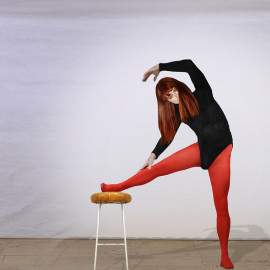I just read an article on T-Nation in which the author expressed his opinion that corrective exercises are a load of bull. People’s problems are that they are weak, period. I have to say I agree, however, I think correctives have a place, it just depends on how you think about them.
One of the author’s main points, assuming I am interpreting correctly, is that physical therapists along with other subscribers of corrective exercises essentially invent reasons for doing what they are doing. He argues that such practitioners of correctives often say things that are not, and probably can not, technically be true. For example that your glutes aren’t firing or that an injured rotator cuff must be worked in isolation because it is weak. Glutes are always firing whenever you do hip extension, he says, because they are the muscles that cause that action. Similarly, the rotator cuff doesn’t have to be strong in isolation because it never works in isolation.
WHAT CORRECTIVE EXERCISES ARE REALLY FOR
I think these are valid points and that in the end, most people need a lot of strength that they don’t have, and that should be a focus for everyone. However, I think that corrective exercises do serve an important purpose, namely, to teach movement patterns and body awareness. Inefficient movement and bad postural habits lead to a whole host of problems and get in the way of progress With strength. Corrective exercises help to teach people about these deficiencies and then to restore the correct patterns.
 Take classic rotator cuff exercise in which the patient is asked to pull a band apart. A physical therapist might say this is to strengthen your external rotators. I prefer to think of it as teaching you to externally rotate. Most people spend all day at a desk with their shoulders hunched in internal rotation. After a while, the body just gets a lot better at internally rotating than externally rotating. We need to teach the body, and the person who inhabits it, what external rotation is and what it looks and feels like.
Take classic rotator cuff exercise in which the patient is asked to pull a band apart. A physical therapist might say this is to strengthen your external rotators. I prefer to think of it as teaching you to externally rotate. Most people spend all day at a desk with their shoulders hunched in internal rotation. After a while, the body just gets a lot better at internally rotating than externally rotating. We need to teach the body, and the person who inhabits it, what external rotation is and what it looks and feels like.
The same thing goes for the glute scenario. As mentioned, the author of our T-nation article does not believe that people’s glutes are ‘not firing’, as is often claimed. I feel totally comfortable agreeing with that. However, that does not mean that I am going to get rid of any glute isolation exercises such as clamshells or band walks, or even bridges. Again, it comes down to what you are trying to teach. I find that outside of a big soft mass on the back side of their pelvis, most people just don’t know what their glutes feel like. Doing some isolation work for a short time, especially as a warm up, can help to create that body awareness. This is something that is very important, especially when you are dealing with non-athletes.
Lastly, I just have one comment about strength, which is that we must remember that strength is relative. Some people can deadlift 600 pounds and compared to them, a lot of us are very weak. But even the weakest desk jockey is probably strong compared to a child. Should we expect a child to have the strength of an adult? If not, should we expect a lawyer to have the strength of a power lifter? Similarly, every exercise can be a strength exercise depending on the person. If it takes all the strength you can muster to perform a hip bridge, is that then a strength exercise or a corrective exercise?
CONCLUSION
I believe that correctives have a place, not as fancy solutions for made up problems, but as teaching tools for people who are out of touch with their bodies. Teaching people what movement is really makes the difference.
PHOTO: bwanderd, 9 External Rotation_1, License



Pingback: The Sternoclavicular Joint - do the movement October 9, 2015
[…] that we don’t want to see. You may need to lighten the load or do some mobility work or corrective exercises before […]
Pingback: Chronic Pain Reduction: Deload and Align - do the movement February 17, 2016
[…] Corrective Exercises – What Are They For? […]